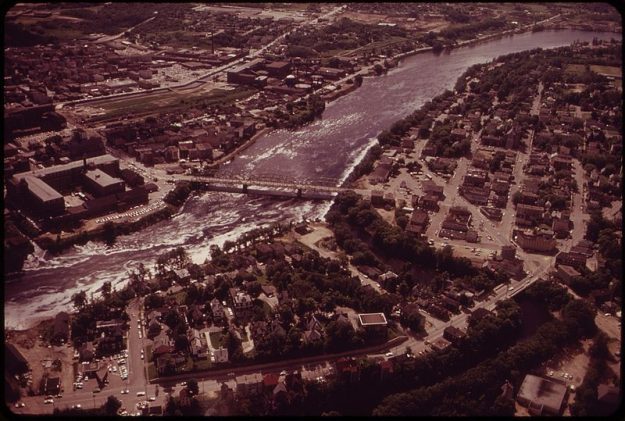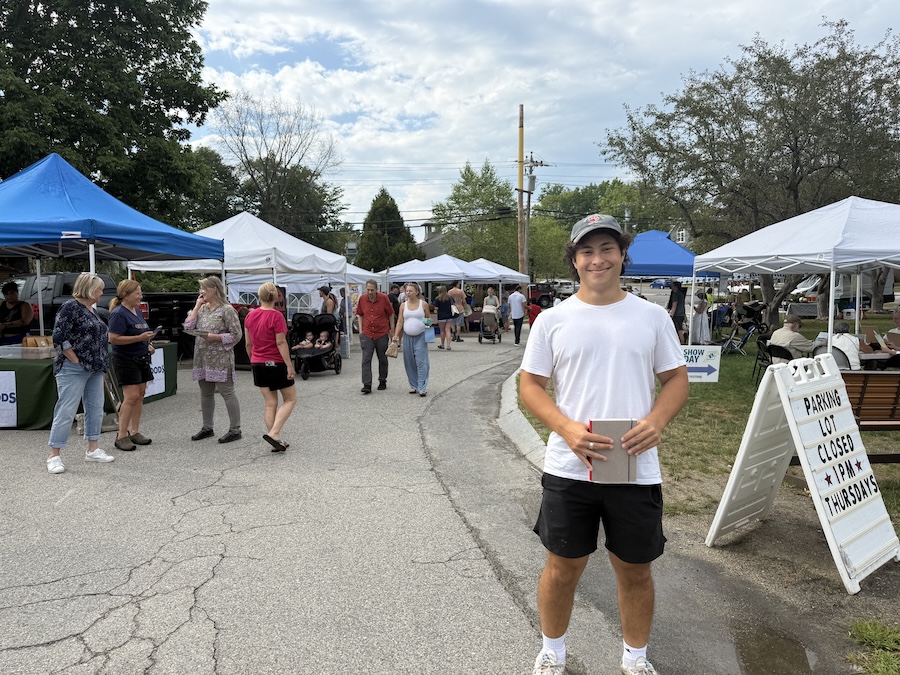Bowdoin Environmental Scientists On Impact of Riverflow into the Gulf of Maine
By Tom Porter
The online publication, which is owned by the American Geophysical Union, shines a so-called "research spotlight" on a paper recently published in the Journal of Geophysical Research-Biogeosciencies.
Incorporating data going back nearly ninety years, the researchers calculated the export, or flow, of dissolved organic carbon (DOC) into the Gulf of Maine from a number of rivers and found significant increases. "Warming temperatures and increased rainfall appear to be bringing increasing quantities of runoff into the ocean," said Rusack Professor of Environmental Studies and Earth and Oceanographic Science Phil Camill, one of the Bowdoin researchers on the project. "And that runoff, by the time if gets to the coast, contains significant amounts of dissolved carbon, thanks to all the dead plant material that leaches into the water through the soil."
Camill and his Bowdoin colleagues—Earth and Oceanographic Science Professor Collin Roesler, and Professor of Biology and Environmental Studies John Lichter—were all involved in a wider NASA-funded research project worth just over $1 million*. "The project is now complete," said Camill, and we're currently in the process of writing up that research." This study, he said, is one of several expected to come out of that work. Also collaborating on the project were scientists from the US Geological Survey, Michigan Technological University and the University of New Brunswick.

One part of the study looked at data from twenty rivers between 1950 and 2013, while another studied fourteen rivers between 1930 and 2013. Although there was notable variability year-to-year, the paper found the most significant increases in the amount of DOC going into the Gulf came during the winter and early spring months.
"DOC concentration is usually high when snowmelt occurs and also in the fall, when hurricanes and storms can hit," said Camill. "Predictably, in the drier, summer months, there's less runoff into the ocean and therefore less carbon leaching into the sea."
The paper also made predictions for the twenty-first century using data from three rivers, the Penobscot, the Kennebec and the Androsoggin, which among them account for nearly of all the runoff from the state of Maine. The study projects larger increases in temperature and smaller increases in precipitation over the century. “The key is not only changes in the concentrations of DOC entering the Gulf of Maine, but also the timing of those fluxes”, said Roesler. “Downstream ecosystems take advantage of the DOC food sources and have evolved to established seasonal cycles; changes in the timing will have significant ecological impacts downstream with regards to fueling primary productivity and algal blooms as well as sequestering DOC in the deep waters of the Gulf of Maine."
Another important factor that this study highlights, said Camill, is that with climate change, events in the uplands have the potential to change ecosystems and livelihoods at the coast. "Coastal systems matter economically and ecologically for so many reasons," he added, "and understanding what is being transported from the rivers to the coast is really worth exploring.
"As a scientist, it's fascinating to learn more about these interactions between something like a forest in western Maine and, for example, a clam flat at the coast, and realizing they could be linked by changes in precipitation and carbon delivery."
*This material is based on work supported by the National Aeronautics and Space Administration under Grant No. NNX11AF22G issued through the Research Opportunities in Space and Earth Sciences (ROSES) program.



